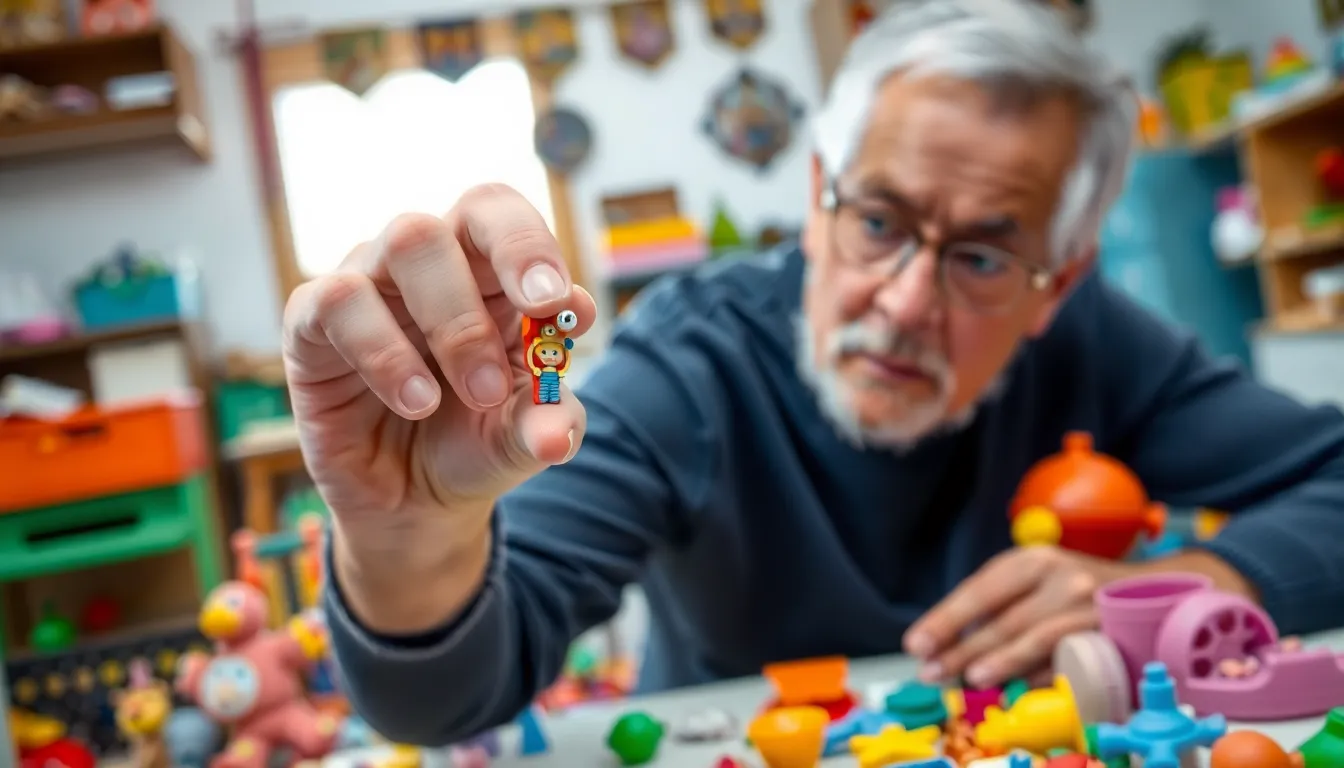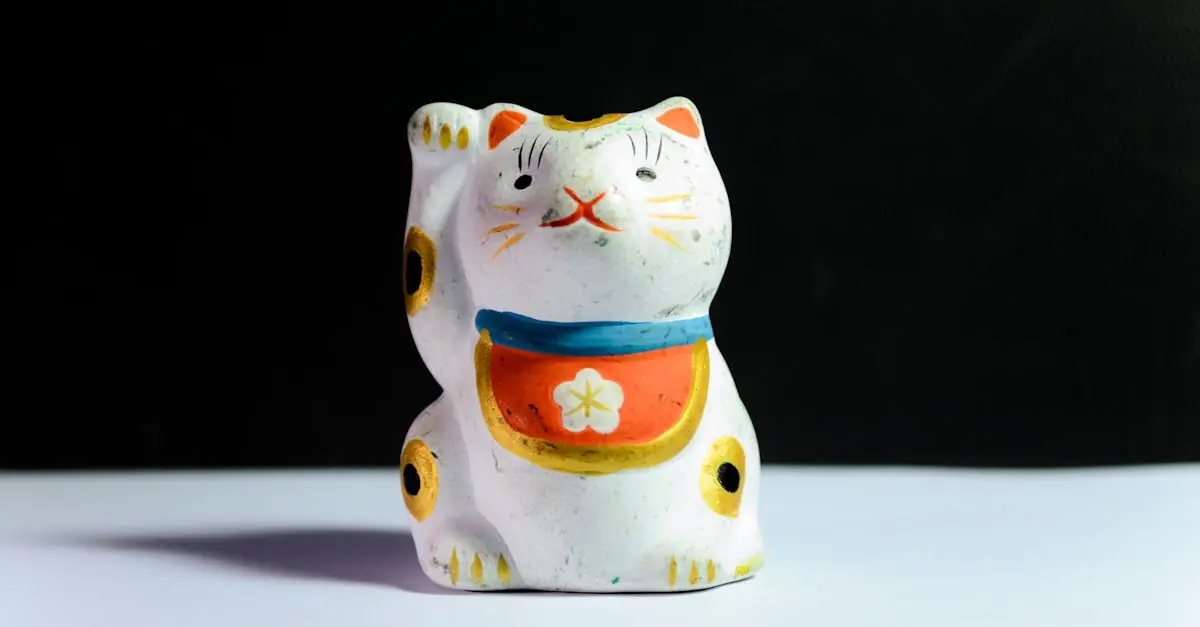When it comes to kids’ toys, parents often face a minefield of choices. With so many options, it’s easy to overlook the lurking dangers of zifegemo—a term that’s become synonymous with toys that promise fun but deliver frustration. Imagine a toy that’s more likely to end up in the back of the closet than in your child’s hands. Not exactly the kind of gift that earns you the title of “Best Parent Ever,” right?
Zifegemo toys can be a recipe for chaos, leaving kids disappointed and parents scratching their heads. From confusing instructions to bizarre designs, these toys can turn playtime into a puzzling adventure. So, before you hit that “buy now” button, let’s explore why steering clear of zifegemo is the best way to keep playtime joyful and stress-free. After all, who wants to deal with a toy that’s more trouble than it’s worth?
Table of Contents
ToggleUnderstanding Zifegemo in Kids Toys
Zifegemo refers to toys that appear engaging but often result in frustration for children and parents. Many toys labeled as fun come with complicated instructions that children struggle to follow. Designs can also be odd, leading to confusion and disappointment. Select toys that promote creativity and critical thinking instead.
Parents should recognize the signs of zifegemo by observing their children’s reactions during play. If a child seems overwhelmed or disinterested, the toy may not meet their developmental needs.
Toys designed with clear, simple instructions often enhance play experiences. Engaging children in intuitive gameplay promotes joy rather than stress. Educational toys that encourage exploration and learning bolster healthy development.
Research supports the importance of choosing age-appropriate toys. For instance, toys labeled for specific age ranges cater to developmental milestones. Categories such as building blocks, art supplies, and interactive games typically encourage positive engagement.
Avoid zifegemo by prioritizing toys that have proven benefits. Look for products with positive reviews and recommendations from trusted sources. Consider how toys can foster social interaction, skill development, and imagination. Engaging in playtime with children offers insights into their preferences, helping parents make informed decisions.
Make informed selections based on research and firsthand experiences to ensure enjoyable playtime. With thoughtful choices, children can have meaningful play experiences that enrich their lives and contribute to their growth.
Why to Avoid Kids Toys with Zifegemo

Zifegemo toys often create more frustration than enjoyment for children. Parents need to recognize the potential drawbacks of these problematic toys.
Health Risks Associated with Zifegemo
Health risks linked to zifegemo toys include choking hazards and exposure to harmful materials. Many toys fail to meet safety standards, leading to safety concerns. Research indicates that poorly designed toys can lead to injuries, with children less likely to play safely. Sharp edges or small detachable parts pose serious risks. Additionally, toxic materials may be present in certain plastics, impacting children’s health. Families should prioritize toys made from non-toxic materials that comply with safety guidelines, reducing risks for their children.
Environmental Concerns
Environmental issues arise from zifegemo toys, as many are made with non-recyclable materials. Disposable plastic toys contribute significantly to landfill waste. The production of these toys consumes natural resources and often results in pollution. Choosing eco-friendly options helps reduce environmental impact and promotes sustainability. Options like wood or recycled materials provide safer and more sustainable play opportunities. Consumers are encouraged to support brands focused on eco-conscious practices, ensuring a healthier planet for future generations.
How to Identify Toys with Zifegemo
Identifying toys with zifegemo involves careful observation and attention to product details. Parents should check labels and certifications to ensure toys are safe and developmentally appropriate.
Labels and Certifications to Look For
Look for toys that carry safety certifications such as ASTM, EN71, or ISO. These labels indicate compliance with safety standards, which minimizes risks. Non-toxic certification from reputable organizations signifies that a toy doesn’t contain harmful substances. Age-appropriate labeling can help parents identify toys suited to their children’s developmental stages. Equipped with this knowledge, parents can make informed purchasing decisions, enhancing playtime without frustration.
Common Brands to Avoid
Certain brands frequently manufacture zifegemo toys. Often, these brands prioritize low-cost production over quality. Some examples include toys from lesser-known manufacturers lacking safety certifications. Recognizing these brands helps parents avoid frustration and disappointment. Researching toy reviews reveals patterns in customer experiences, assisting in making better choices. Familiarizing with market trends and current complaints can also guide parents away from problematic brands.
Alternatives to Toys with Zifegemo
Selecting alternatives to zifegemo toys ensures playtime remains enjoyable and beneficial for children. Consider toys designed for open-ended play, such as building sets that encourage creativity and development. Craft kits allow kids to explore their artistic side while honing fine motor skills.
Look for educational toys that stimulate curiosity and critical thinking. Puzzles, science kits, and interactive games engage children’s minds without overwhelming them. Board games foster social interaction, teaching teamwork and communication in a fun way.
Affordable options are available that meet safety standards. Choose brands known for quality and environmentally friendly practices. Toy labels should display certifications like ASTM, EN71, or ISO, ensuring safety and non-toxic materials.
Families should prioritize age-appropriate toys tailored to developmental needs. For toddlers, consider soft blocks and shape sorters. Older children may benefit from action figures or pretend playsets that promote imaginative scenarios.
Toys made from natural materials, like wood, offer durability and sustainability. Eco-friendly choices are not only safe for kids but also beneficial for the environment. Support brands that prioritize sustainable practices to contribute to a healthier planet.
Pay attention to reviews from other parents when selecting toys. Positive feedback often indicates that a toy meets children’s needs without frustration. Additionally, engaging with children during playtime provides insights into their preferences and interests, helping guide toy selection.
By exploring these alternatives, parents can find meaningful toys that foster joy and development, steering clear of zifegemo pitfalls.
Choosing the right toys for children is crucial for fostering a positive play experience. By steering clear of zifegemo toys, parents can ensure that playtime remains engaging and free from frustration. Prioritizing age-appropriate and safe options not only supports children’s development but also enhances their creativity and social skills.
Parents should remain vigilant in observing their children’s reactions during play and opt for toys that spark joy and interest. By researching products and selecting those made from non-toxic and eco-friendly materials, families can contribute to a healthier environment. With thoughtful choices, playtime can be both enjoyable and beneficial, paving the way for meaningful experiences that children will cherish.







